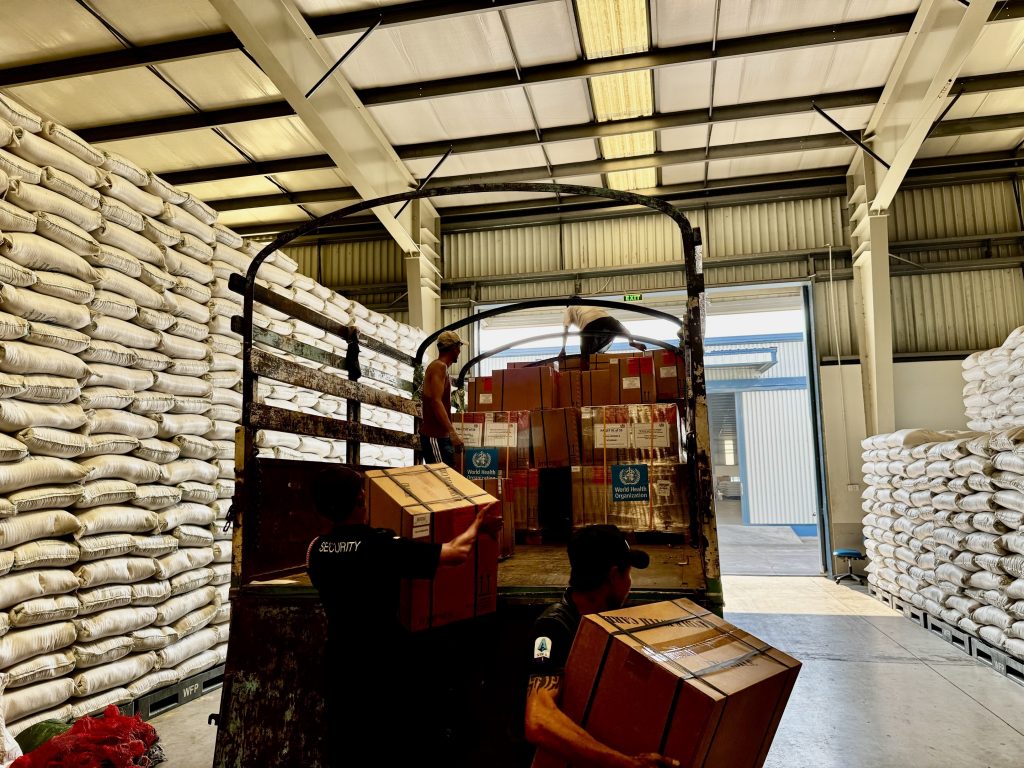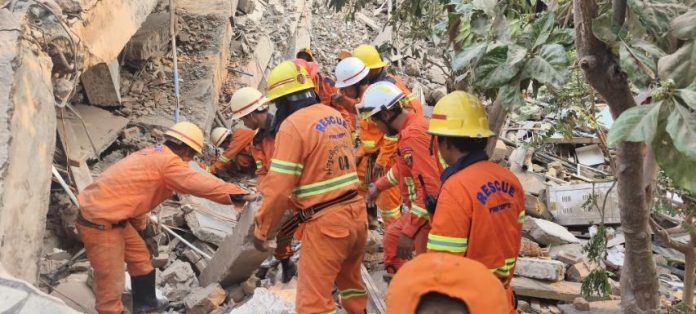WHO Myanmar
In the wake of two devastating earthquakes that struck central Myanmar, claiming over 2,148 lives and injuring more than 3,892 the World Health Organization (WHO) has launched a full-scale emergency health response to reach those hit hardest by the disaster.
Within 24 hours of the twin quakes—measuring 7.7 and 6.4 in magnitude—WHO deployed nearly three tons of trauma kits, surgical supplies, and multipurpose tents from its emergency stockpile in Yangon to hospitals in Nay Pyi Taw and Mandalay, where overwhelmed medical teams are treating thousands of injured survivors.
But this is more than a natural disaster—it is a crisis upon crisis.
Already reeling from conflicts and the impacts of the COVID-19 pandemic, communities in central Myanmar are now grappling with collapsed health facilities, broken infrastructure, and renewed fears of disease outbreaks. The earthquakes struck some of the most vulnerable and conflict-affected regions—Sagaing, Mandalay, Magway, Bago, and Eastern Shan—where health systems were already on the brink.
“The people of Myanmar are enduring unimaginable hardship. This earthquake has only deepened the suffering of communities already battling displacement, fragile health systems, and limited access to basic services,” said Dr. Thushara Fernando, WHO Representative to Myanmar. “We are acting with urgency to deliver the support they need now.”

WHO has classified the situation as a Grade 3 emergency, the highest level of response under its Emergency Framework, triggering global mobilization. With $5 million released from the Contingency Fund for Emergencies and an urgent appeal for an additional $8 million underway, WHO is scaling up its response to provide trauma care, prevent disease outbreaks, and restore essential health services.
Hospitals on the frontlines
At the heart of the response are the public hospitals—many of them damaged but still functioning against the odds. In Nay Pyi Taw and Mandalay, major hospitals including the 1000-bed Nay Pyi Taw General Hospital and Mandalay General Hospital have already received WHO’s emergency kits, including trauma supplies and multipurpose tents. The supplies include critical trauma kits to treat severe injuries and field tents to expand space for the surge in patients.
Still, needs are vast. Anesthetics, blood transfusion supplies, and mental health support are in short supply. Safe water, sanitation, and hygiene services are disrupted—sharpening the threat of disease, particularly cholera and acute watery diarrhea, already present in several affected regions.
A region in crisis
Initial assessments reveal that three hospitals have been completely destroyed and 22 others partially damaged, with access to remote communities severely constrained by damaged roads and collapsed bridges. The worst-hit areas, including Sagaing, remain largely unreachable, with electricity and communications still down.
Despite these challenges, WHO is preparing a second wave of support, including Inter-Agency Emergency Health Kits that can serve close to 2 million population for three months. Simultaneously, WHO has activated its global Emergency Medical Teams (EMT) Network, with 26 international teams already expressing readiness to deploy.
The path ahead
Over the next 30 days, WHO’s priorities include:
– Trauma and surgical care through mobile teams and emergency deployments;
– Strengthening disease surveillance to prevent outbreaks;
– Re-establishing maternal, child, and chronic disease care; and
– Supporting mental health and psychosocial services for survivors and frontline responders.
But to do all this, time and funding are critical.
“This is a race against time—not just to save lives today, but to protect the already weakened health systems from collapsing tomorrow,” said Dr. Fernando.
As the dust settles, WHO’s commitment remains steadfast: to stand with the people of Myanmar—not just in moments of tragedy, but through recovery and resilience.
The World Health Organization is a specialized agency of the United Nations responsible for global public health. It is headquartered in Geneva, Switzerland, and has six regional offices and 150 field offices worldwide.
DVB publishes a diversity of opinions that does not reflect DVB editorial policy. We’d like to hear what you think about this or any of our stories: [email protected]



